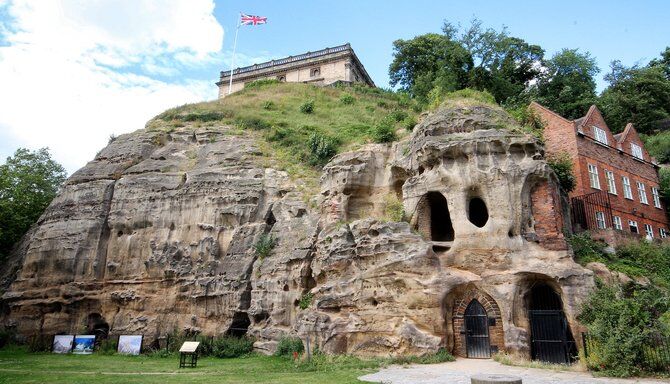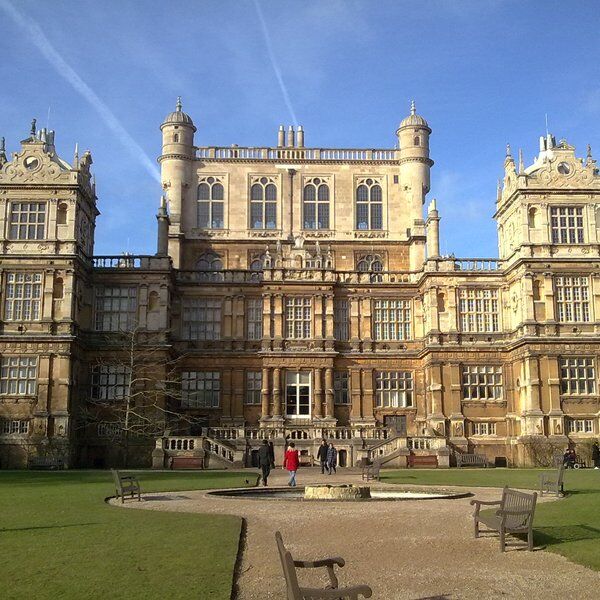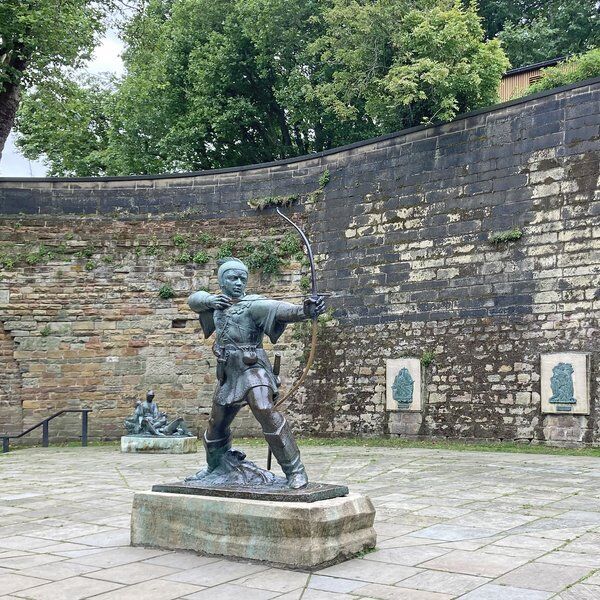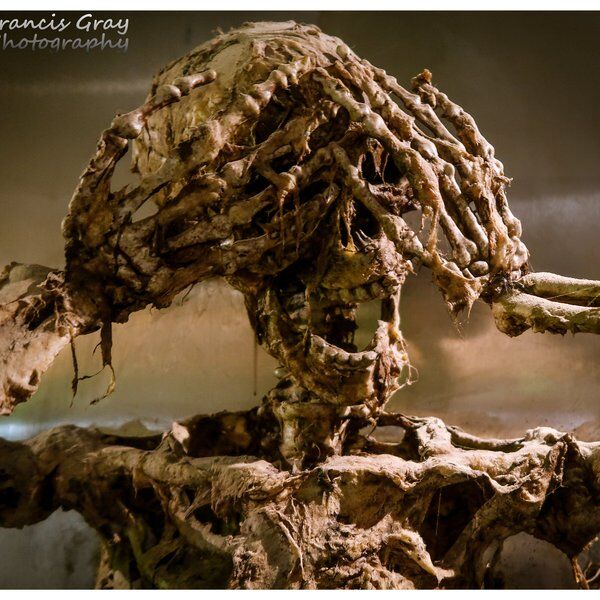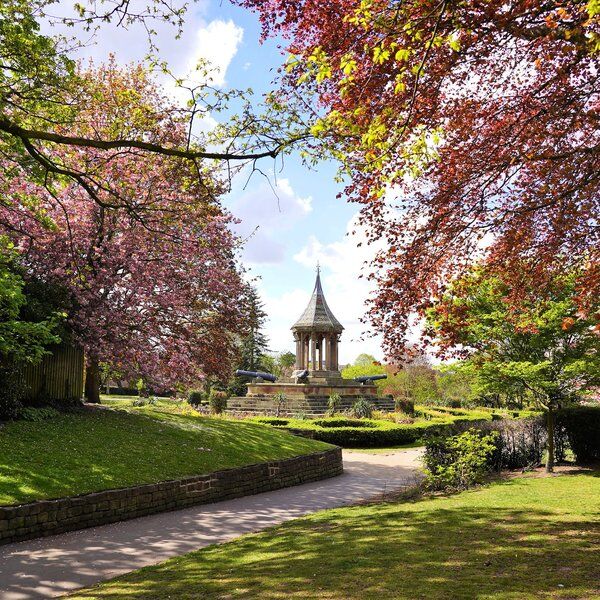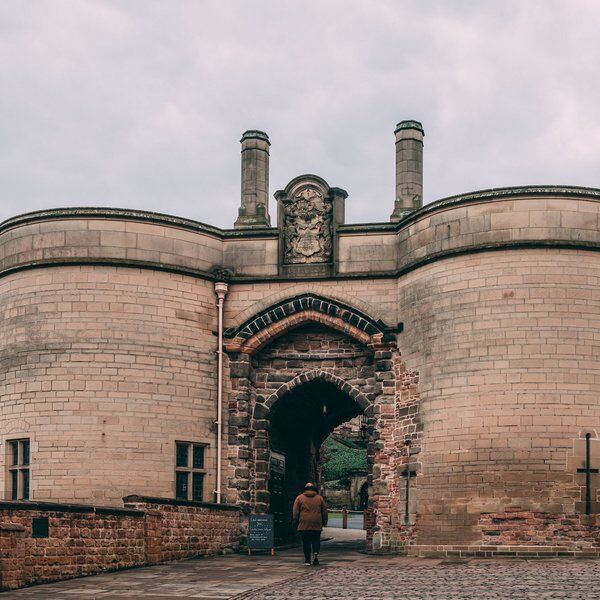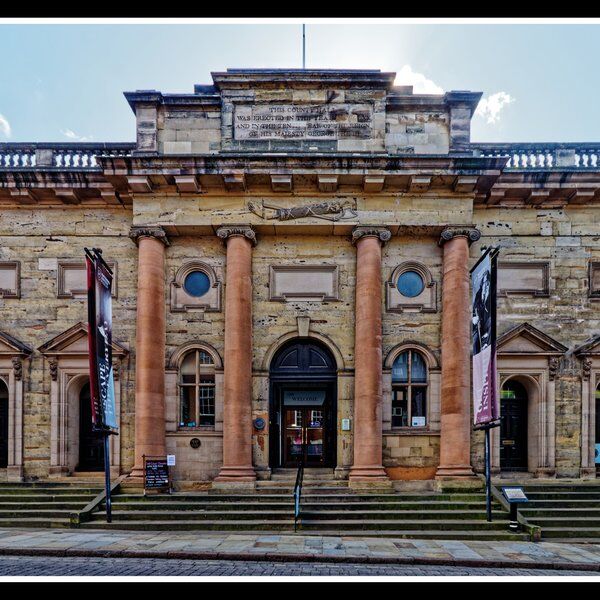Discover Brewhouse Yard Museum
Below Nottingham Castle, near Ye Olde Trip to Jerusalem, lies the Museum of Nottingham Life at Brewhouse Yard, otherwise known as the Brewhouse Yard Museum. Housed in a row of charming 17th-century cottages, which were once part of a larger cluster of 20 buildings, the museum brings 300 years of Nottingham's past to life. Its journey as a museum began in 1977 when the five cottages fell into disrepair and were redeveloped into the Museum of Nottingham Life.
Visitors to the museum can explore the numerous dug-out caves behind the main building, which would have served a range of purposes from mediaeval maltings and tanneries to World War Two air raid shelters. As well as the 17th century cottages, learning more about each family and their involvement in Nottingham's textile industry. The exhibits within the museum feature an assortment of objects, artefacts, and memorabilia and are replicas of different historical settings, including a recreated 1920s shop window, a toy gallery, and a traditional Victorian home.
Adding to the intrigue, is Mortimer’s Hole, an underground passageway that links Nottingham Castle to Brewhouse Yard. In 1330, this tunnel was used by supporters of Edward III to breach the castle's security and capture Roger Mortimer, the Machiavellian Earl of March.

Mediaeval Beginnings of Brewhouse Yard
Crusades and Castle Connections
Brewhouse Yard has been mentioned in royal papers since 1217 and was closely linked with Nottingham Castle. One of the most famous landmarks is Ye Olde Trip to Jerusalem pub, which claims to have been serving patrons since 1189 AD. Goods were transported via the nearby River Leen and taken up to the Castle through a tunnel known as Mortimer’s Hole.
Outside the Law
"A great receptacle for fanatics, and other like people, who would not live conformable to the laws."
In mediaeval times, Brewhouse Yard was known as an "extra-parochial liberty," placing it outside the jurisdiction of local parishes. This status made it a haven for criminal activity but also provided a refuge for religious non-conformists. Its tax-free status likely contributed to the early rise of brewing activities in the rock caves.
Plot and Intrigue at Brewhouse Yard
To Preserve the Powers of a King
The caves of Nottingham Castle were the setting for a coup in 1330, where supporters of the young King Edward III captured his mother, Queen Isabella, and her lover, Roger Mortimer. Mortimer was dragged through Brewhouse Yard and taken to London, where he met his grisly end. In 1403, King Henry IV gifted Nottingham Castle to his wife, Queen Joan, who faced accusations of witchcraft and sorcery but was later pardoned by her stepson, King Henry V.
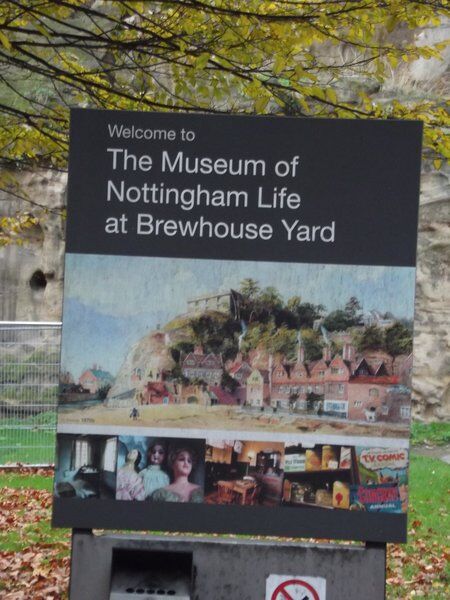
Brewhouse Yard and the Cottage Industry
Early Developments
James I separated the area from castle holdings in 1611, from here Brewhouse Yard transitioned into a hub for brewing, framework knitting, and dyeing industries. The earliest parts of the current cottages were built in the 1670s, and by 1680, the name "Brewhouse Yard" was recorded, indicating a long history of brewing and malting. Residents included the Wildboare family, who were cloth fullers and dyers, and the Elliott family, who made a fortune from a secret recipe for black dye used in men's stockings.
Protest and Rebellion at Brewhouse Yard
A Home of the Luddites
In the early 19th century, the Lee family resided in the cottages. As framework knitters, they faced economic challenges due to the industrial revolution and competition from European imports. This period saw the rise of the Luddites, who protested against mechanisation and the decline of their livelihoods. The Rebellion gallery in the Ducal Palace offers more information on the Luddite movement.
Last Residents and New Beginnings
By the end of the Victorian era, the lace industry had replaced framework knitting in Nottingham. The Webster family, who lived in Brewhouse Yard, were heavily involved in this industry. William Webster was an ironworker, but his daughter Lucy worked as a lace finisher in the Lace Market. During World War II, the caves at Brewhouse Yard served as air raid shelters, and the cottages housed firewatchers. Lucy Webster's account of life in Brewhouse Yard, recorded in 1982, forms the basis of the museum's interpretation of this era.
Creating the Museum of Nottingham Life at Brewhouse Yard
In 1972, Nottingham City Council purchased the Brewhouse Yard site, along with the Waterworks building, and restored it as a museum, opening in 1977. Today, the Museum of Nottingham Life at Brewhouse Yard is set within a series of cottages and man-made caves carved from the region’s porous sandstone.

Exploring the Museum of Nottingham Life at Brewhouse Yard
Caves at Brewhouse Yard Museum
The caves, initially used for trades and storage, reveal a lot about Nottingham’s past. While some caves were used as dwellings, most served practical purposes like protecting residents from the Blitz. The tunnel section was of course named Mortimer's Hole, for its involvement in his capture. During excavations, archaeologists unearthed a variety of artefacts including pots and implements, as well as less savoury objects, painting a vivid picture of the area's historical uses.
Rock Cottage
Perched high in Castle Rock, Rock Cottage is a highlight of the museum. It houses a meticulously recreated Victorian schoolroom, complete with desks and chairs dating from the 1920s. The Education and Outreach section of the Museums Service enhances this exhibit by organising re-enactments of Victorian school days. School trips allow students to experience firsthand what education was like in the late 19th century, writing on slates and learning about the strict discipline of Victorian schoolmasters.
Rock Cottage also features a second-hand toyshop filled with toys from early Victorian times to World War II. Among the toys is a wooden rocking horse, an iron tricycle, and a pair of pond skates. The collection also displays many wooden and lead toys that children of the past once cherished.

The Old Shopping Precinct
On the first floor of the museum, visitors are transported back to the 1920s with a recreated shopping precinct. This exhibit includes a variety of shops that were essential to daily life at the time. There is a pharmacy, a doctor’s surgery, a barber’s shop, a fully fitted hairdresser’s, a pawnbroker, an ironmonger, a music shop, and an antiques shop. The restoration of each shop has accounted for every little detail, providing an authentic experience.
The highlight is a grocer’s shop filled with items that are still familiar today. The boot and shoe shop also has a saddler’s workshop, which sells bits for horses’ bridles. To enhance the experience, the precinct is accompanied by a soundtrack to add to the immersiveness. Visitors can also try their hand at using a traditional hand pump to draw water from a well, getting a real feel for historical daily chores.
Period Homes
The Museum of Nottingham Life also casts a spotlight on how residents lived and worked in the 1880s and early 1900s, in the recreated Victorian home, complete with a child's bedroom, a parlour, and a kitchen. The dim lighting in these rooms mimics the inefficiency of gas lights, giving a realistic feel of the past.
Document Archives and Special Exhibitions
The Museum of Nottingham Life at Brewhouse Yard has a large collection of documents, maps, local portraits, and archival material. One room in the museum is dedicated to showcasing a variety of games and items relating to World War II. The 'kaleidoscope gallery' features 'feely boxes' that allow visitors to touch items and appreciate the quality and nature of historical materials.
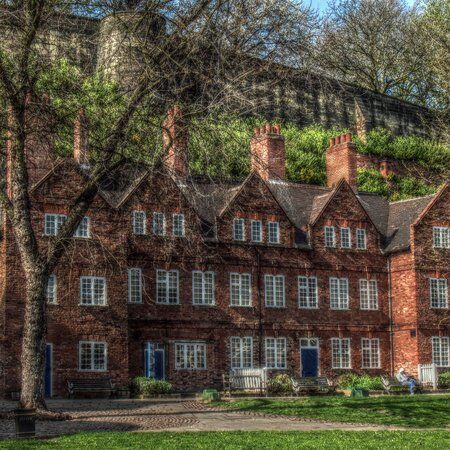
The Museum Gift Shop
As visitors conclude their journey through the Brewhouse Yard Museum, they can stop by the museum shop, which sells toys, stationery, models, sweets, and souvenirs. The shop also sells books and postcards of historical Nottingham.
Brewhouse Yard Gardens
The museum is set within landscaped open land featuring native British trees, plants from cottage gardens, and herbaceous borders—some were even transplanted from Strelley Hall. Specimens include the Trent meadow crocus, the Nottingham catchfly plant, and the Broad Marsh plant. Culinary and medicinal herbs are grown in front of the museum, each with detailed labels explaining their historical uses. The cottage garden also grows roses dating from the 6th century, including one that won prizes at the local St Ann's Rose Show in 1855.

Attractions Near the Museum of Nottingham Life
While visiting the Brewhouse Yard Museum, take advantage of its proximity to other attractions in Nottingham:
- Nottingham Escape Rooms: Prepare to take on new challenges, puzzles and fiddly riddles to uncover Nottingham’s many fables and foibles.
- Nottingham Castle: The castle offers stunning views and deep insights into Nottingham's history.
- Robin Hood Statue: A must-see tribute to the legendary folk hero.
- National Justice Museum: Dive into the history of crime and punishment in this engaging museum.
- Wollaton Hall and Natural History Museum: Explore this magnificent Elizabethan mansion and its natural history exhibits.
- Nottingham Treasure and Scavenger Hunts: Fun-filled, engaging, and interactive treasure hunts & scavenger hunts in Nottingham.
- Nottingham Arboretum: The Nottingham Arboretum, filled with war relics and inspiring one of the greatest children's stories of all time, is far more than a simple botanical park.
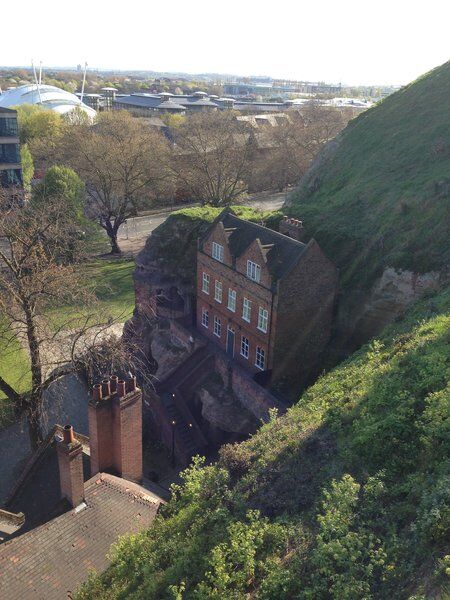
Interested in finding more places like this? Try one of our Treasure Trails in Nottingham - untangle cryptic clues as a team, as you are taken on a journey to the most unique, unusual and bizarre corners of Nottingham.
